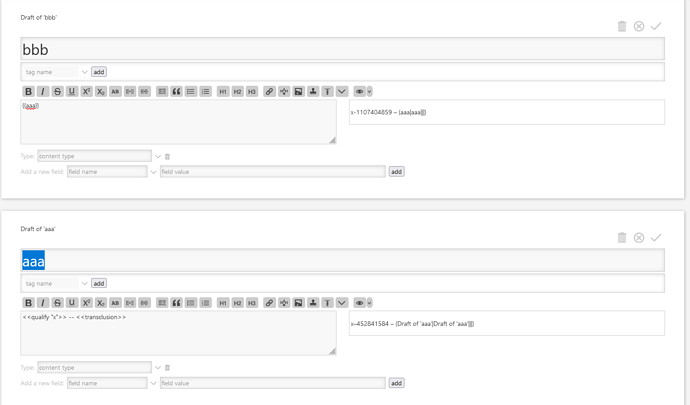I have built a system where I constitute a whole article from parts, recursively. I use two templates for this, one for the nodes and one for the leaf.
Each part a a part number (“partnum” field). If the tiddler is transcluded within an an other part, I want to display tgat partnum. But not if it is not (that is, the tiddler is open in the main river story).
How can I check for that?
On looking for a solution, I saw there might be another approach with embedded story, but as I’m not interested by tweaking the parts, I shall keep my mechanism. But I could use the story mechanism to build the complete story. A kind of edit mode for the whole article, or part of it. Has anybody used it likewise? Would it be a god idea? Any hint about going that way?

